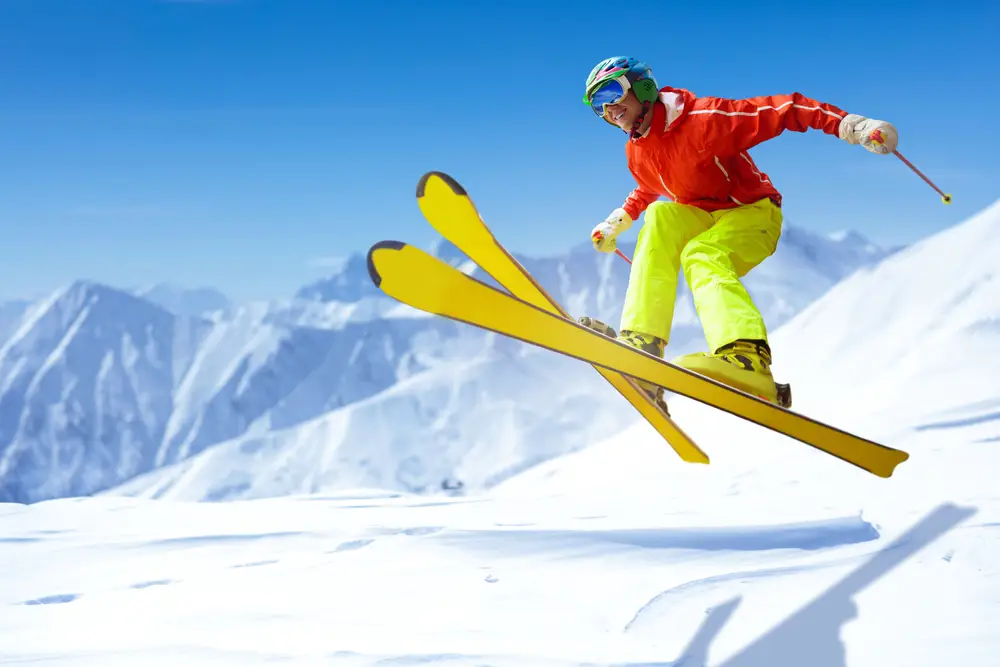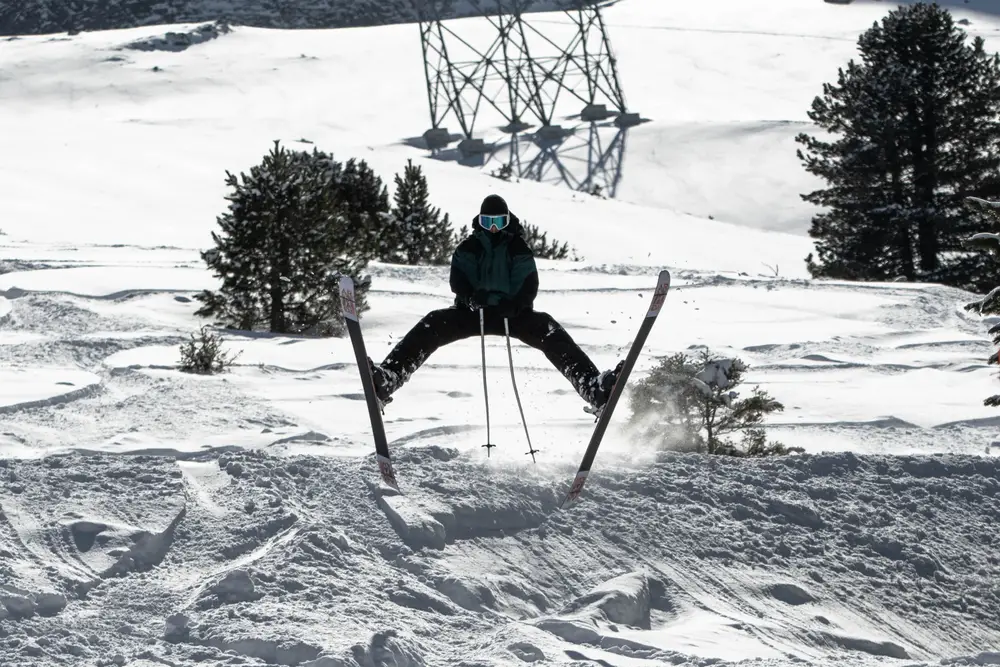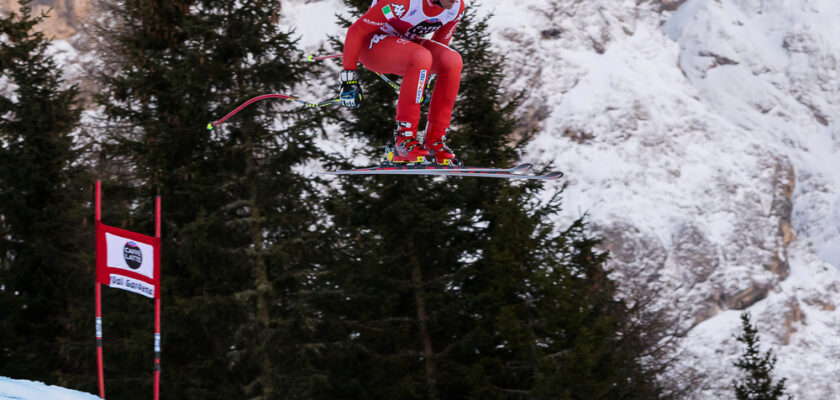Ski jumping is one of the most eagerly awaited winter sports disciplines, as it requires a great deal of skill from the athletes when performing their acrobatics.
The sport was born in the 19th century in Norway and has evolved over the decades to become what it is today. Among the changes the sport has undergone are, above all, the implementation of advanced technologies.
For all this to work, however, it is essential to know the rules of ski jumping. These rules make it much easier to understand how the sport takes place, what jumpers can and can’t do, how scores are evaluated and much more.
It’s time to finally check out the rules of ski jumping! Check them out!
Open your Betano account and get up to 1,000 reais in bonuses.
PIX payments, live games and super odds!
Click here to open your account!

Ski jumping rules: complete list
- Playing venue;
- Equipment;
- Duration;
- Score;
- Techniques and style;
- Competitors;
- Infractions and penalties;
- Climate;
- Safety.
Ski jumping rules: place of play
Ski jumping ramps, known as trampolines, have been developed with great care to ensure the safety of the athletes.
There are different categories of trampolines, ranging from small (K-60) to large (K-120 and above).
The K-point is the distance in meters from which the ramp is measured, representing the point where skiers must land to obtain a basic score.
The structure of the trampoline includes several essential parts, check them out:
- Starting tower: this is where the athletes will begin their jump. The height and inclination can vary according to the size of the trampoline.
- Launch pad: this is the name of an inclined surface on which skiers gain speed before taking off.
- Landing zone: this is the area where athletes land. It is gently sloped to facilitate a safe landing and reduce impacts.
Ski jumping rules: equipment
Ski jumpers use specialized equipment to ensure their safety. This includes skis, boots, helmets, aerodynamic clothing and goggles.
Each piece of equipment in the sport must meet strict standards, which are set by the International Ski Federation (FIS). Here’s what they are:
- Skis: skis must have a specific length that is based on the athlete’s height, with a maximum of 145% of the skier’s height.
- Boots: they are designed to offer support and flexibility, allowing precise movements during the jump.
- Helmets and goggles: these are essential items for safety, protecting against impacts and maintaining clear visibility.
- Aerodynamic clothing: these garments must be fitted to the body to minimize wind resistance, but cannot be too tight, according to FIS regulations.
Ski jumping rules: duration
Ski jumping competitions have two main rounds, the first and the final.
Then, all the athletes take part in the first round, and the 30 best advance to the big, long-awaited final.
The total duration of a competition can vary, depending on the number of participants and the weather conditions. Normally, however, they last around two to three hours.
Ski jumping rules: scoring
Scoring in ski jumping is based on two main factors: the distance of the jump and the technique displayed by the athlete while in the air.
Each jump is evaluated by a panel of five judges, who are responsible for awarding marks for form, style and landing. The score is calculated as follows:
- Distance: each meter beyond point K is worth a specific amount of points, varying according to the size of the trampoline used in the event.
- Technique: the judges can give marks from 0 to 20 for each jump, taking into account the posture during flight, the precision of the landing and overall control. The highest and lowest scores are discarded, and the remaining three are added together.
Ski jumping rules: techniques and style
Skiers must demonstrate perfect techniques to increase the distance and win high scores from the judges. The main ski jumping techniques are:
- Take-off: it must be smooth and controlled, with a burst of force to gain height.
- Flight: the body must be kept in a “V” shape, with the skis open and the arms close to the body to optimize aerodynamics.
- Landing: here, athletes need to perform the telemark technique, in which one ski is placed in front of the other, providing stability and good style.
Ski jumping rules: competitors
The number of participants in a ski jumping competition can vary greatly, but at international events, for example, between 50 and 70 competitors usually take part in the first round. In the final, only the top 30 from the first round compete once again.
Ski jumping rules: infractions and penalties
There are several infractions that can lead to penalties in ski jumping, check out the main ones!
- Non-conforming equipment: this refers to the use of skis, clothing or other equipment that does not meet FIS specifications.
- False start: the act of taking off before the official signal can result in the athlete being disqualified.
- Misconduct: unsportsmanlike behavior or violation of competition rules can result in penalties or even disqualification.
Ski jumping rules: weather
Weather conditions play a very important role in ski jumping competitions, as the sport takes place on snow. Therefore, wind, temperature and precipitation can affect the safety of competitors.
Therefore, there are specific rules to adjust the compensation of points in the event of strong wind, and competitions can be postponed or canceled if conditions are deemed unsafe, putting athletes at risk.
Ski jumping rules: safety
Safety is a top priority when ski jumping, as the risk of accidents is high. Therefore, in addition to the mandatory use of helmets and other protective equipment, the ramps and landing zones need to be very secure and monitored at all times.
Additional safety measures include the presence of medical teams and strict protocols for assessing the conditions of the track and the weather before and during competitions. Once again, safety must come first!

Ski jumping rules: complete list
- Playing venue;
- Equipment;
- Duration;
- Score;
- Techniques and style;
- Competitors;
- Infractions and penalties;
- Climate;
- Safety.
Now that you know what the rules of ski jumping are, take the opportunity to keep following the site to find out more about this and other sports! Don’t forget to leave a comment!



